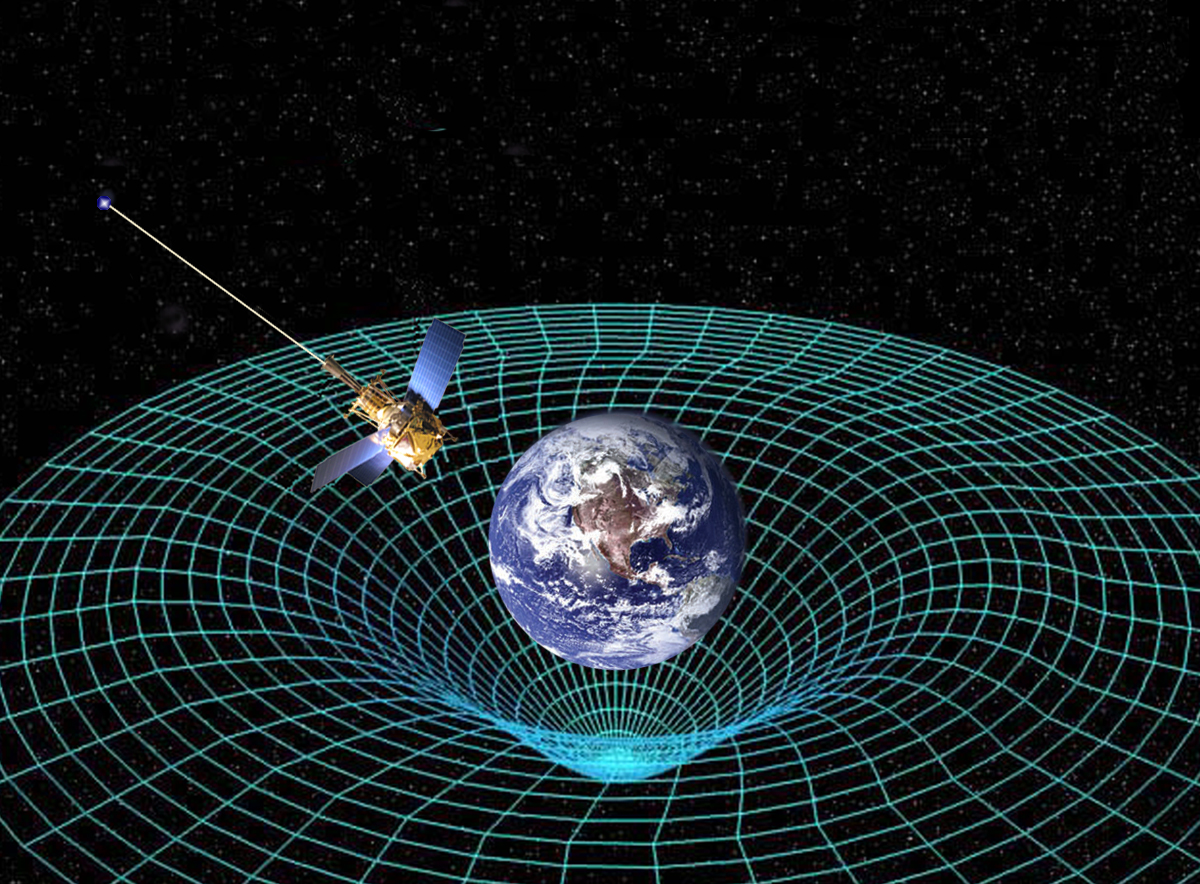
Figure 1 – NASA’s Gravity Probe Mission shown in a NASA graphic depicting the warp in spacetime caused by the planet Earth. From NASA and in the public domain.
We seem to have ended yesterday’s discussion with the conclusion that the Empire State Building is an object in a three dimensional world (space) rendered by the lens into a flat two dimensional object, called the photograph. But not so fast. There is a bit more to a photograph.
What distinguishes the points in the photograph? If it is a black and white photograph each pointy has to have an intensity associated with it. If you are happy to divide the range of intensities into 256 grey levels from 0 to 255, each point has an intensity associated with it. So what we are really saying is that each point (x,y) on the photograph has an intensity and really needs to be denoted as (x,y,i), where i is the intensity. So a black and white photograph really needs to be thought of not as a two-dimensional but three-dimensional object.
BTW – 256 grey levels is referred to as one computer byte of information. If you are shooting in uncompressed raw black and white mode, there is a one-to-one correspondence between your number of pixels in your sensor and the number of byes required to store that image on your computer. So I megapixels = 1 megabyte.
But what about a color image? Every color imaginable (actually not quite) can be created or stored as a combination of the three colors: red, green, and blue. So if you are shooting a color image you really have neither a two-dimensional photograph or a three-dimensional photograph, but really a five dimensional photograph. Each point is described in a five dimensional space by five coordinates (x,y,r,g,b). Where r, g, and b are the amounts of red, green, and blue respectively. This is a hard thing to picture in your mind, or even on a graph. But it is understandable, and really we have slipped seamlessly into what physicists and mathematicians refer to as a five-dimensional hyperspace. It’s almost Star Trekian! But, as Mr. Spock would say: “This all seems quite logical.”
Mr. Spock, of course, would have focused on a different form of hyperspace. The four-dimensional space of space time, that Einstein used to describe gravity. It is the stuff that warp-drives, worm holes, and time travel are made of. I won’t go into all of that here. But I will include as Figure 1 the wonderful graphic from NASA for its gravity probe mission. You know, “to boldly go where no man has gone before.” 8<}
The point being that three dimensions is only sufficient to describe our world if it were merely everywhere either black or white, like a pencil drawing on white paper. We need intensity and color to describe what we see. Rather than shooting over our heads, the concept of hyperspace is really in our heads all along. Our three dimensional vision- world is really six dimensional and photographs of it five dimensional.+
+And I guess, I should point out that to store a megapixels worth of color information I need not one megabyte, but a megabyte per color; so three megabytes in total.
